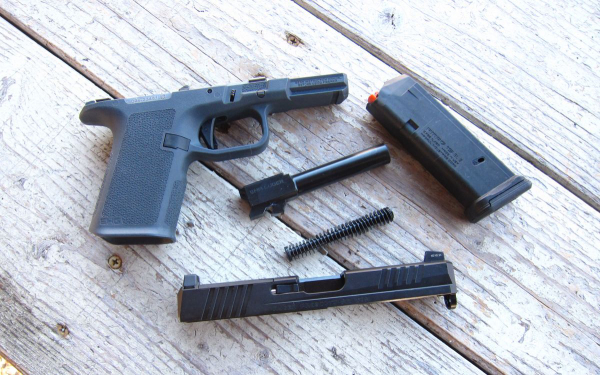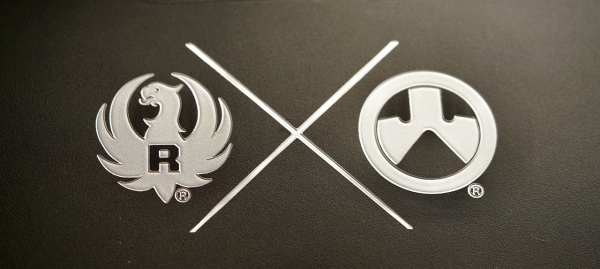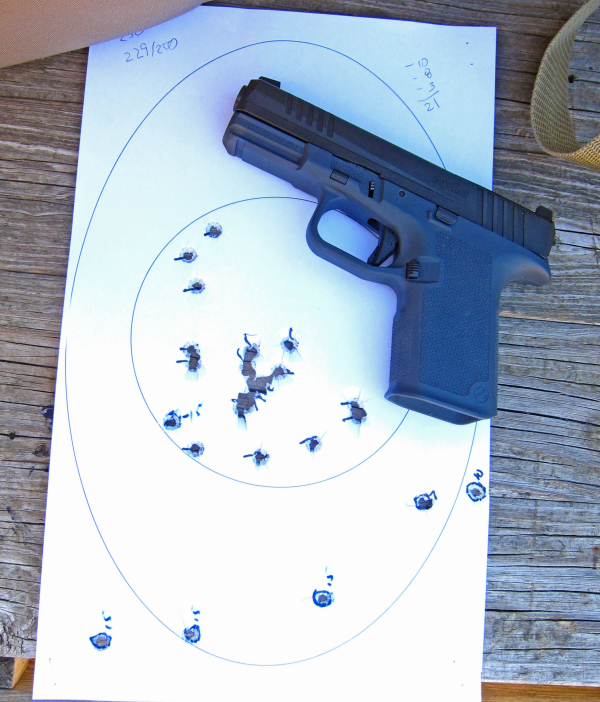Ever have a hankering for an American made GLOCK 19 – made by an American company? Recently firearms manufacturer Ruger joined with MagPul to make a pistol with upgraded features, improved ergonomics and moved to bring it in at a price that leaves you with enough cash to further customize the piece – if that’s your thing.

Why a GLOCK 19? Because it’s become the de facto standard for a self-defense sidearm since the early 1990s. While a number of other makers have tried to improve on the original – with some success – it’s still highly regarded for reliability, handling and sufficient capacity.

Making a knock-off is something that’s been done – quite well – in this country. For Ruger to get involved, it took something else. That is combining the “fire control insert” concept to the GLOCK design – with the gun’s serial number on the FCI – so it can transfer to other MagPul frame modules. Pressing out the forward pin – the one just over the front leg of the trigger guard – allows the unit from the locking block back – to come out.
The frame is interesting, the “Magpul Enhanced Handgun Grip (EHG)” with a unique texture. The front “thumb/trigger finger” locator pads might be a bit far forward for some. The magazine well is flared, but not huge and outlandish. It’s well cut under the trigger guard, has a “universal-pattern accessory rail” forward and a cut to assist reaching the magazine catch.
The sights are high from the factory – a nod to the Ruger-marked optics cover plate – but they’re steel; the height is to ensure some co-witness with an optic. It’s obvious to all that Ruger wouldn’t make a service/compact carry pistol that wasn’t PMO compatible. The high sights tell the tale.
The front sight properly has a tritium vial, the rear sight is serrated and has a wide notch, allowing daylight on either side of the front sight. The trigger is just fine for a service/compact carry pistol. The slide treatment – with a custom esthetic and front- and rear cocking serrations – is well done.

Still, it’s strange to handle a “Ruger-GLOCK.”
The gun is provided with a pair of MagPul magazines, as one would expect. And the gun accepts original GLOCK magazines, if there was any doubt. The nice polymer carry case is marked with the logos of MagPul and Ruger, a nice touch.
My first range trip with the new heater found a soggy range. Using the bullseye bay and secretly shooting the “secret pistol” – this was before the announcement – I fired standing, a more-or-less barricade position. The ammo was whatever I grabbed on the way out – deadlines are deadlines.
I found the gun to easily cluster into 4-5” at 25 yards with five-shot groups. The “best three” measurement – an analog to shooting the gun in a machine rest – gave me a clue as to the limits of accuracy of the new gun.
I was pleasantly surprised.
Hornady (old stock) 124 grain XTP shot into 1 ½”; Federal “Classic” 124 grain FMJ had a 2 ½” best effort. Low-cost Monarch 115 grain FMJ from Academy Sports + Outdoors had a 2 ¾” cluster and Hornady 147gr. XTP shot a 1 ¾” group.
I had a little ammo left and tried four rounds on the fifty-yard 10” gong; I went three for four with iron sights.
I won’t intimidate any bullseye or PPC competitors with that, but it’s a new gun – new to me.
I spent the next short trip to the range on a “EZ Scorer” 12” x 18” BC IPSC Practice Target. While not so big as the regular USPSA target, it’s close enough and I’d be working close. Getting on a timer, I sought to check my handling of the new gun.
Suffice to say that trying for three A-zone hits in two seconds from guard – not a particularly trying exercise – was something that I was unable to accomplish with the RXM on this trip. I was working close, from 7, 10 and 15 yards, so distance wasn’t an issue.
On top of that, I wasn’t staying within the par time.


Doing some “negative taping” (tape any hit outside the A-zone, I began to work – again from ready – using the Shooters Global SG Timer GO, with basic drills. At each distance, I’d shoot a single, a pair, a failure to stop and a single to the “high percentage” A-zone at the top of the target. I finished with singles from the nondominant hand only. At the end of the exercise, I did several strings of the “Demand” Drill – aiming in on the target and taking the slack out, so the sound of the shot cuts into the timer’s “beep.”
This is good for shooter control – being still as the shot breaks – and for focus on the trigger (everything else has been done).
The following day, I made one more trip with the RXM. I used a couple of items, a “ban-era” 10-round magazine from GLOCK and the Comp-Tac Warrior Holster – a “stealth” or “pancake” style polymer outside-the-waist holster. It’s configured to accept the standard frame (9mm-40-357S) GLOCK autos – regardless of slide length and it’s cut for high sights and an optic – forward-looking, that.

Using the SG Timer GO, I worked on some drills with the old-style Bakersfield PD repair center and some Winchester “Target and Practice” 115gr. FMJ ammo. Starting with an empty chamber, loaded magazine, I had the only “stoppage” of the gun’s run thus far. I did the immediate action drill to a pair in just over three seconds. From there I did holster drills, singles and pairs, from various distances. I also worked one-hand shooting, first with the dominant hand, then nondominant as well as doing the “right-hand/left hand” supported string from my state’s POST qual. I scored the target at a dismal 229/250.
My excuses include the too-light, too-rare shooting schedule and the unfamiliarity with the nice-feeling but maybe-not-yet fitting MagPul frame. That’s okay, I had the same problem with “that other brand” in 2001.
It takes time.
I went to work on a B-8 repair center, shooting one handed at fifteen yards, then shooting two-handed strings – one right and the other left – from 25 yards. With the right hand, from distance, I scored 43 and the left produced a 42. An 85/100 is not par for me, as I’ve done better.
One thing I can say: I want to keep trying because I like shooting it. Thus far, it’s clearly a well-designed “concept” pistol that may eventually combine the modularity of the P320 with the ready parts and supplies availability of the G19 at a modest price point.
This thing bears more examination. Stay tuned.
— Rich Grassi